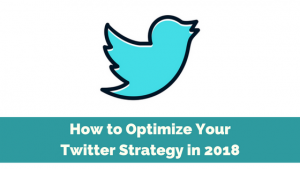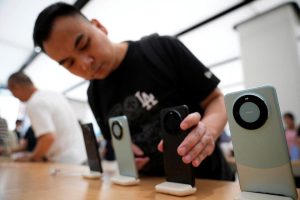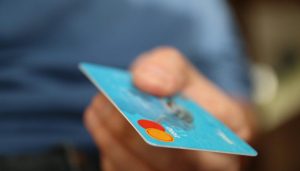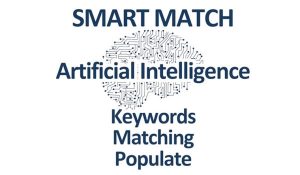Why solid-state battery startups need better branding
EV battery companies haven’t had to worry about building a brand as EV makers have picked up the communications slack. That needs to change.
BY Matt Owens
For several years, investors (and futurists) have been waiting impatiently for the arrival of solid-state EV batteries. They promise to eliminate most limitations of their lithium-ion counterparts, including weight, range anxiety, materials costs, and long recharging times. The end result should be EVs that can drive for a thousand miles on a charge that takes only 10 minutes.
Unfortunately, we’re not there yet. Toyota, one of the biggest investors in the technology, originally thought it would launch a line of hybrid, solid-state battery cars in 2025. Nowadays, estimates range anywhere from 2027 to the end of the decade. While solid-state battery companies are well-funded, in some cases even publicly traded, they still face significant engineering and production problems.
But these challenges may open up an opportunity to address a likely future shortcoming: their brands. Startups like Solid Power, QuantumScape, and Welion are fielding tech that should one day make a huge difference, and not just in EVs but in everyday life. Clean power has the potential to be transformative on a societal scale.
Making the most of that requires an effective, modern brand. Traditional batteries like Duracell and Eveready outcompete their peers (and charge a considerable premium) based on trust, recognition, and connection as much as functional difference. They connect in ways that aren’t just visual, but versatile and experiential—they’re operating systems that underlie everything from mission statements and internal messaging to advertising, marketing, and products and services.
It’s easy to see the importance of this from the negative examples of the EV battery brands that came before. Few know the name of CATL, which is by far the market leader. Outside the U.S., some may know the number-2 contender, BYD, but only because it’s also the biggest EV maker in the world. Other top battery brands are either recognized for other things (LG and Panasonic), or largely invisible to the public (CALB and SK On).
This has been both an advantage and a disadvantage. Battery companies haven’t had to worry about consumers, as EV makers have picked up the communications slack. But it’s also been a challenge, as these companies have been locked into a single category and dependent on marketing investment from their partners. Given the well-studied reluctance of the public to adopt EV tech, and the current reputational difficulties and weak financial results from Tesla, solid-state battery brands may want to rethink this strategy.
Here’s why.
The challenge is mostly downhill. Solid-state batteries are an almost sure bet. Once the technological and manufacturing problems are sorted out, they have few barriers to adoption. They fit neatly into existing paradigms and technologies and will benefit from human storytelling that explains their promise and advantages.
It’s a light lift. Generally, lean, software-driven startups require far less initial investment than those trying to build physical products as complex and research-driven as batteries. For the former, a brand is a costly investment that must be balanced against current opportunities. For the latter, it’s a relatively insignificant expense that compounds its value over time. Given the stakes (a Straits Research report put the potential market at $13 billion by 2030), brands should probably take advantage of every possible tool they can.
It provides flexibility for a wider market. Solid-state batteries will likely power many products beyond EVs. Recently, for example, Yoshino Power collaborated with noted designer Yves Béhar to create attractive, portable power stations. Strong brands make it easy to transition into new categories like these. When people are familiar with a brand connected to its storytelling, they embrace it more easily when it shows up in less familiar places.

It preps a multilingual market. Solid-state batteries have to cross borders, and their brands need to follow. Multilingual branding is exactly what it sounds like: Rather than translating and adapting language as you scale, companies start early with a multilingual approach. Probably no brand does this better than Coca-Cola, which is well known for embracing local festivals, traditions, and folkways. Another example is Lego, which sources ideas from locals and uses them to produce sets that reflect local tastes and ideas. Going local or regional from the beginning takes time and planning, but it only makes sense for solid-state companies.
It sets the stage for AI success. Using AI for proprietary asset creation is still in its infancy, while conversational AI is table stakes. But AI doesn’t happen overnight. It requires investment, training, experimentation, and optimization. Moving now will save time and investment later.
While solid-state batteries may not be rolling off the production line yet, they should enjoy a welcome reception from consumers and industry alike when they do. As a result, they need to avoid the brand invisibility that continues to impact lithium-ion companies. A small investment in brand identity and human storytelling should provide a flexible platform to maximize expansion and impact. Building a strong brand may not be the first thing you think of when contemplating the future of energy, but it shouldn’t be the last either.
Matt Owens is the founding partner and chief design and innovation officer at the brand studio, Athletics.
ABOUT THE AUTHOR
Fast Company
(14)
Report Post







